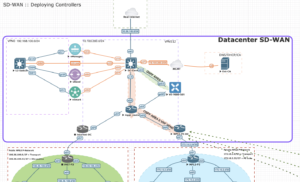IEEE 802.1Q
An additional of 32 bits are added to packet header consisting of:
- Tag protocol identifier (TPID): 16 bits
Below are part of the TCI structure and is divided in the below parts: - Priority code Point (PCP): 3 bits
- Drop Eligible indicator (DEI): 1 bits
- VLAN identifier (VLAN ID): 12 bits
1 Byte = 8 bits
The minimum frame size is 64 bytes, but can be extended to 68 Bytes on some transmissions before padding happens.
The maximum framesize is then extended from 1518 Bytes to 1522 bytes. 4 bytes is 4×8 bits. TPID and TCI are both 16 bits long, which results in 32 bits equals 4 bytes.
Note: Some devices do not support a bigger frame size. Although they can be transmitted and received succesfully, they can sometimes be reported as “Baby Giants”.
- Runts: Packets that are below the minimum framesize of 64 bytes. These are dropped.
- Baby Giant: Packets between the size of 1518 and 1522. Can be dropped by some devices
- Giants: Packets that are beyond the MTU size of 1500.
- CRC: Checksum mismatch from sending and receiving station. Usually a result of collisions, but also indicate noise or bad LAN media (UTP socket and cabling)
- Collisions: Normal in a half duplex situation, should not be seen with Full Duplex operations.
Note: See Resource below for more Interface statistics examples.
The Packet: | Destination MAC | Source MAC | TPID | PCP | DEI | VLAN ID | destination IP | Source IP | Payload |


